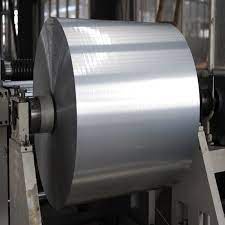Machining processes for steel encompass a wide range of techniques employed to shape, cut, and finish steel workpieces. Steel is a versatile material with various grades and properties, making it essential in industries such as automotive, aerospace, construction, and manufacturing.
The choice of machining process depends on factors like the steel grade, desired finish, tolerances, and the specific application. Here are some commonly used machining processes for steel machining:
-
Turning:
- Turning is a fundamental machining process used to create cylindrical parts. A lathe rotates the workpiece, and a cutting tool removes material to achieve the desired shape.
- Steel turning can produce precision parts like shafts, bolts, and bushings. It's suitable for both soft and hardened steel.
-
Milling:
- Milling is a versatile process for creating complex shapes by removing material with rotary cutters. It can be performed on horizontal or vertical machines.
- Steel milling is used for producing slots, gears, threads, and flat surfaces. High-speed milling is ideal for harder steel alloys.
-
Drilling:
- Drilling is used to create holes in steel components. It involves rotating a drill bit to remove material.
- Steel drilling is essential in industries like construction, where holes are needed for fasteners and structural connections.
-
Grinding:
- Grinding is a precision machining process that uses abrasives to remove material from steel surfaces. It's ideal for achieving tight tolerances and a smooth finish.
- Surface grinding, cylindrical grinding, and centerless grinding are common types used for steel components.
-
Boring:
- Boring is similar to drilling but is used to enlarge existing holes or create internal features, such as bores and cylinders.
- It's used in applications where precise sizing and alignment are critical.
-
Broaching:
- Broaching is a specialized process for creating keyways, splines, and other intricate internal shapes in steel.
- It involves a tool with teeth progressively removing material, providing high precision.
-
Electrical Discharge Machining (EDM):
- EDM uses electrical discharges to erode material from the workpiece. It's suitable for hard and heat-resistant steel.
- Wire EDM and sinker EDM are variations commonly used for intricate and small-scale steel components.
-
Laser Cutting:
- Laser cutting utilizes a high-energy laser beam to melt, burn, or vaporize steel, resulting in precise cuts.
- It's commonly used for sheet metal fabrication and can achieve intricate shapes with minimal material waste.
-
Waterjet Cutting:
- Waterjet cutting employs a high-pressure jet of water mixed with abrasive materials to cut steel.
- It's suitable for thick steel plates and materials sensitive to heat.
-
Plasma Cutting:
- Plasma cutting involves ionizing gas to create a high-temperature plasma arc that melts and cuts through steel.
- It's used for both precision and high-speed cutting in various steel thicknesses.
-
Honing:
- Honing is a finishing process used to improve the surface finish and size accuracy of steel cylinders and tubes.
- It uses abrasive stones to achieve a smooth surface.
-
Thread Cutting:
- Thread cutting processes, such as threading and tapping, are used to create threads on steel components, essential for fasteners and assemblies.
In conclusion, machining processes for steel are diverse and versatile, catering to the wide-ranging requirements of industries. The choice of machining technique depends on factors like material properties, part geometry, precision requirements, and cost considerations. Advances in machining technology continue to enhance the efficiency and precision of these processes, making steel an even more integral material in modern manufacturing.


No comments yet